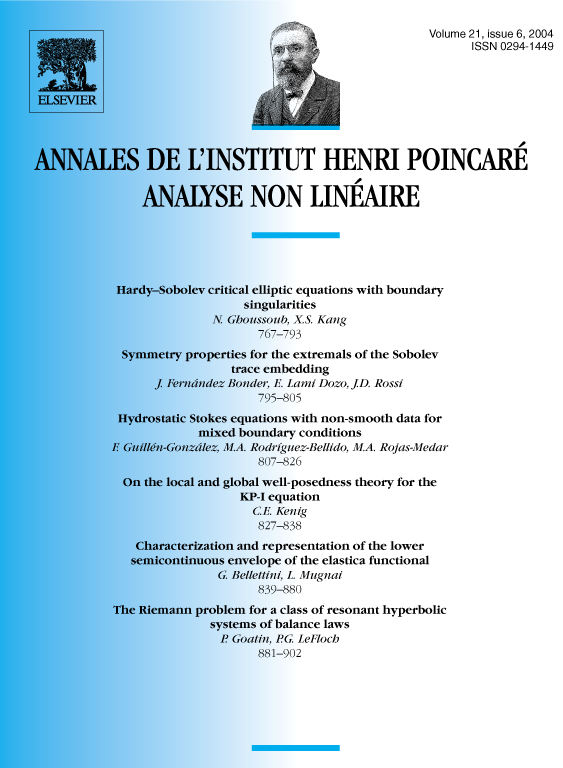Hydrostatic Stokes equations with non-smooth data for mixed boundary conditions
F. Guillén-González
Dpto. de Ecuaciones Diferenciales y Análisis Numérico, Universidad de Sevilla, Aptdo. 1160, 41080 Sevilla, SpainM.A. Rodrı́guez-Bellido
Dpto. de Matemática Aplicada I, E. T. S. de Arquitectura, Universidad de Sevilla, Avda. Reina Mercedes, 2, 41012 Sevilla, SpainM.A. Rojas-Medar
Dpto. de Matemática Aplicada, IMECC-UNICAMP, C. P. 6065, 13083-970, Campinas-SP, Brazil

Abstract
The main subject of this work is to study the concept of very weak solution for the hydrostatic Stokes system with mixed boundary conditions (non-smooth Neumann conditions on the rigid surface and homogeneous Dirichlet conditions elsewhere on the boundary). In the Stokes framework, this concept has been studied by Conca [Rev. Mat. Apl. 10 (1989)] imposing non-smooth Dirichlet boundary conditions.
In this paper, we introduce the dual problem that turns out to be a hydrostatic Stokes system with non-free divergence condition. First, we obtain strong regularity for this dual problem (which can be viewed as a generalisation of the regularity results for the hydrostatic Stokes system with free divergence condition obtained by Ziane [Appl. Anal. 58 (1995)]). Afterwards, we prove existence and uniqueness of very weak solution for the (primal) problem.
As a consequence of this result, the existence of strong solution for the non-stationary hydrostatic Navier-Stokes equations is proved, weakening the hypothesis over the time derivative of the wind stress tensor imposed by Guillén-González, Masmoudi and Rodrı́guez-Bellido [Differential Integral Equations 50 (2001)].
Résumé
Le but principal de ce travail est d’étudier le concept de solution très faible pour le système de Stokes hydrostatique avec conditions aux limites mixtes (condition de Neumann non régulière sur la surface rigide et condition de Dirichlet homogène dans le reste). Dans le cas du problème de Stokes, ce sujet a été étudié par Conca [Rev. Mat. Apl. 10 (1989)] en imposant une condition aux limites de Dirichlet non homogène et peu régulière.
Dans ce papier, on introduit le problème dual qui est aussi un système de Stokes hydrostatique mais avec une condition de divergence non nulle. D’abord, on obtient la régularité forte pour le problème dual (ce résultat peut être consideré comme une généralisation des résultats de régularité pour le système de Stokes hydrostatique avec la condition de divergence nulle, obtenus par Ziane [Appl. Anal. 58 (1995)]). On montre ensuite l’existence et unicité de solution très faible pour le problème primal.
Comme conséquence de ce résultat, on montre l’existence de solution forte pour le problème de Navier-Stokes hydrostatique non-stationnaire, avec une hypothèse sur la dérivée par rapport au temps du tenseur du vent plus faible que celle qui était imposée par Guillén-González, Masmoudi et Rodrı́guez-Bellido [Differential Integral Equations 50 (2001)].
Cite this article
F. Guillén-González, M.A. Rodrı́guez-Bellido, M.A. Rojas-Medar, Hydrostatic Stokes equations with non-smooth data for mixed boundary conditions. Ann. Inst. H. Poincaré Anal. Non Linéaire 21 (2004), no. 6, pp. 807–826
DOI 10.1016/J.ANIHPC.2003.11.002